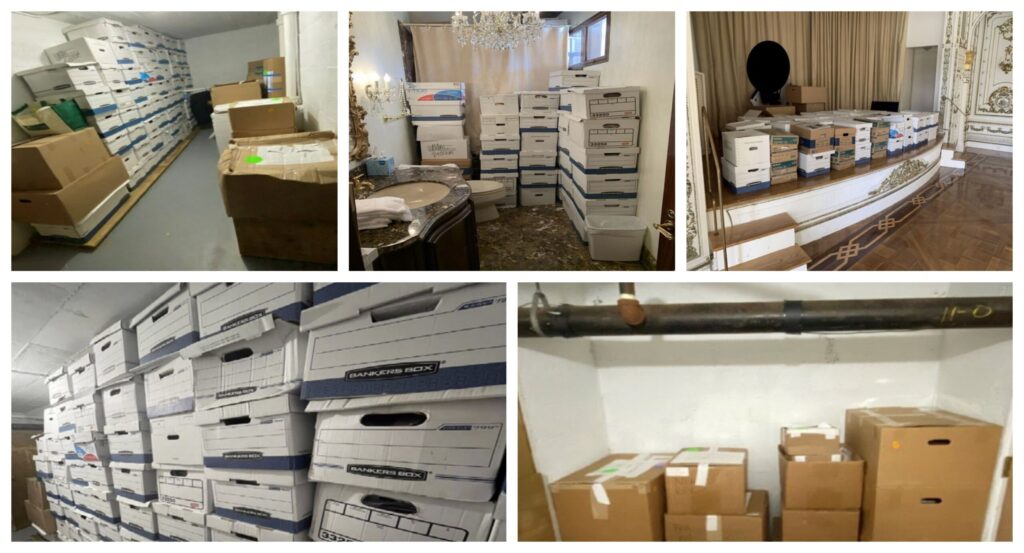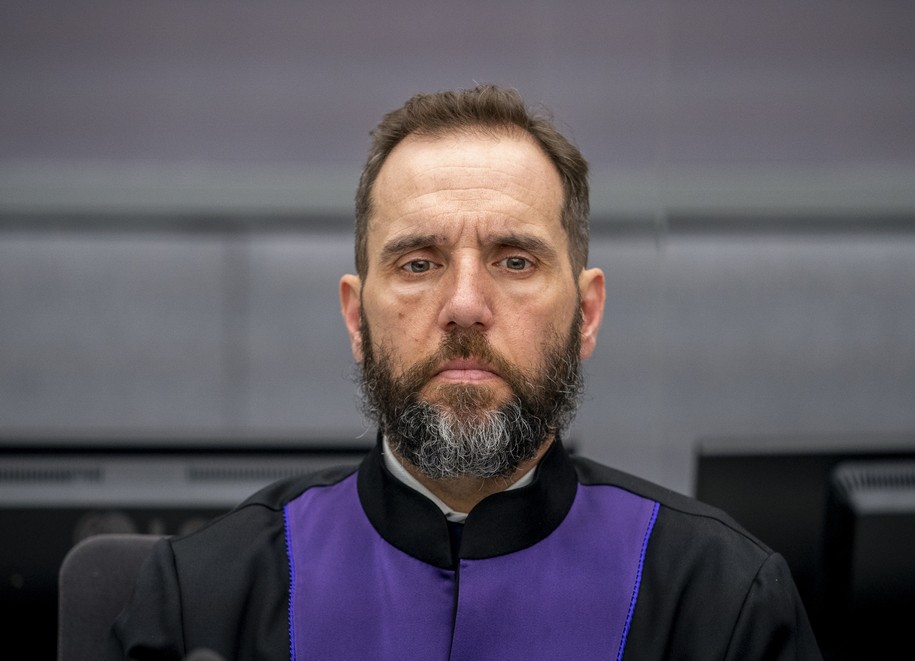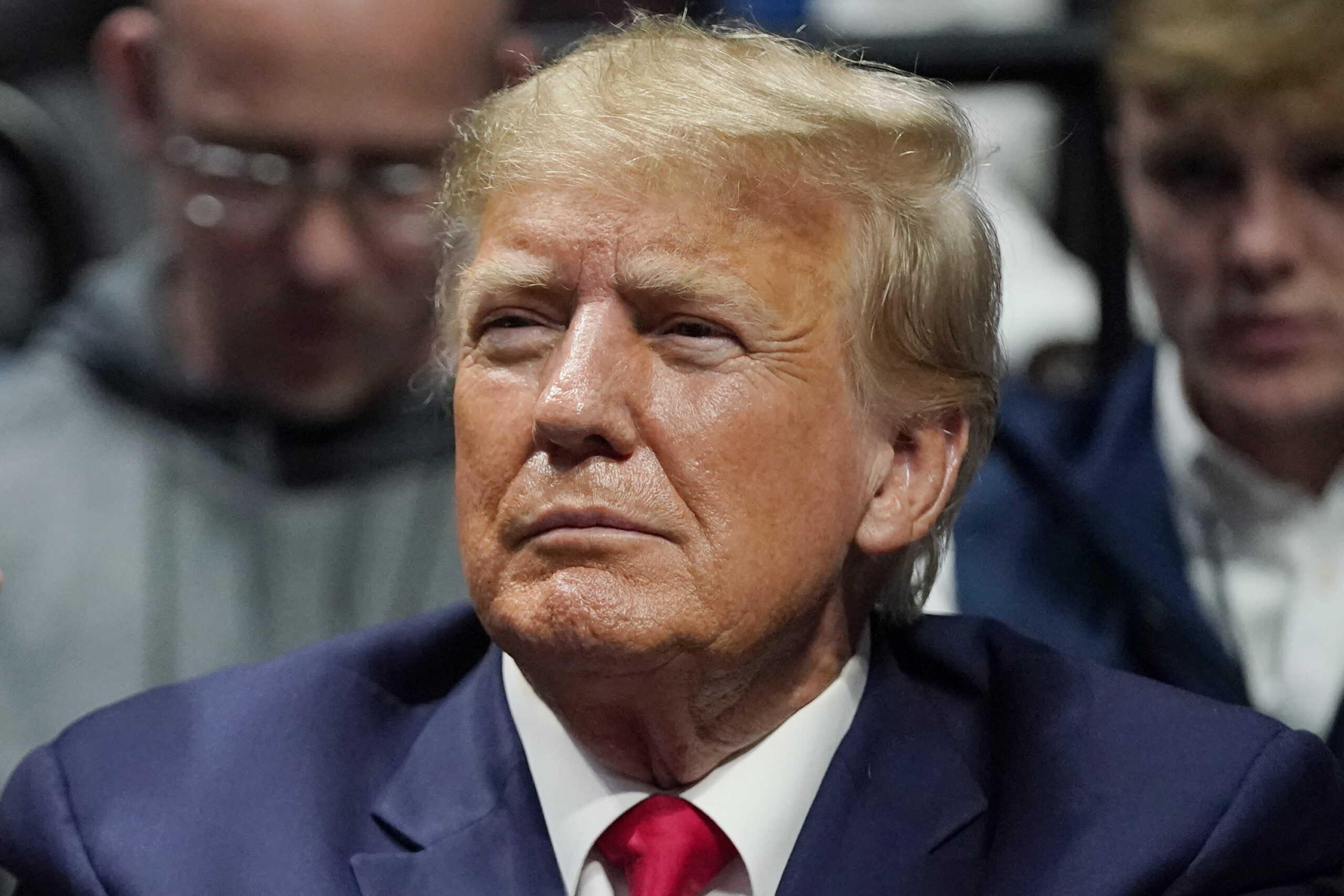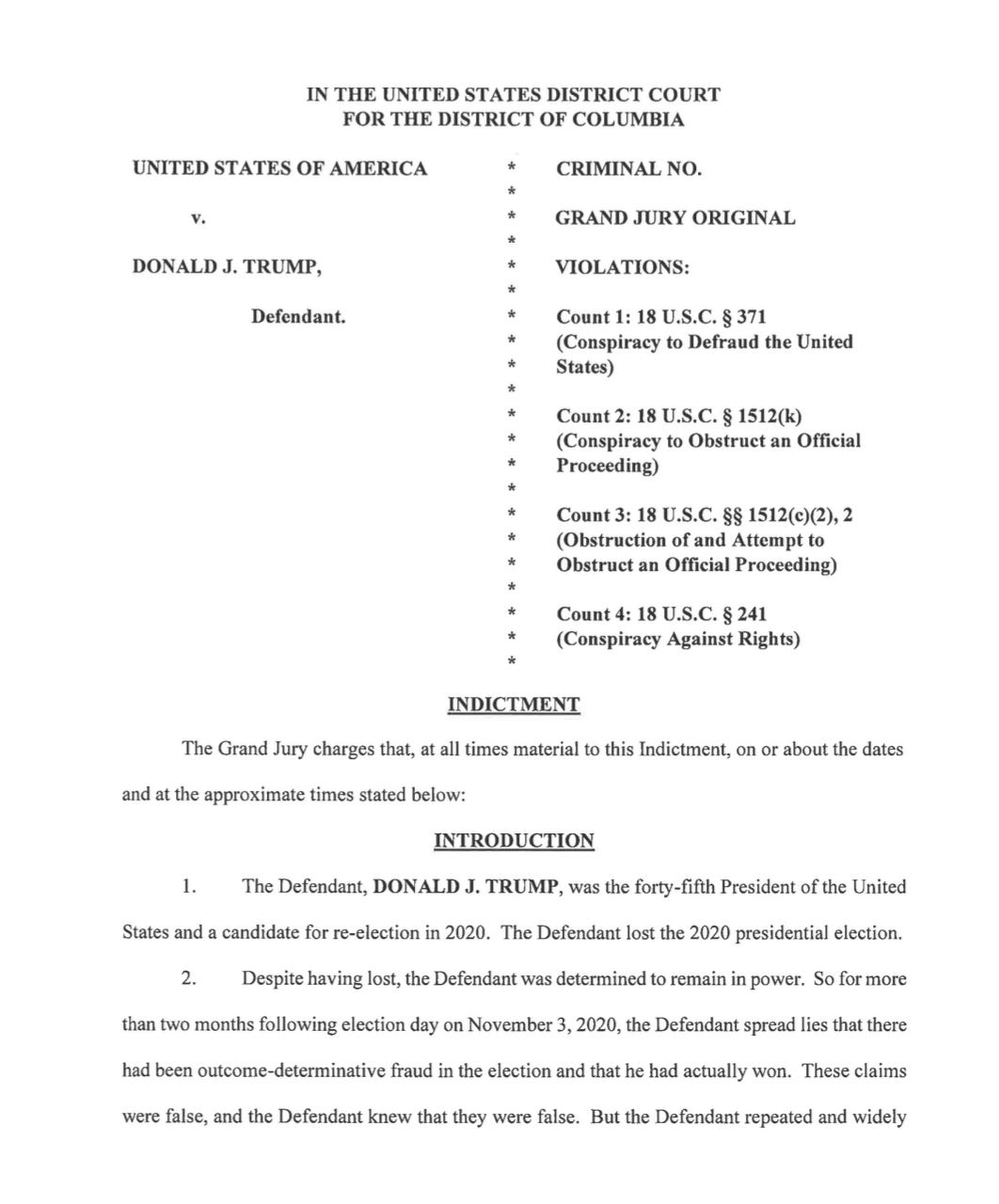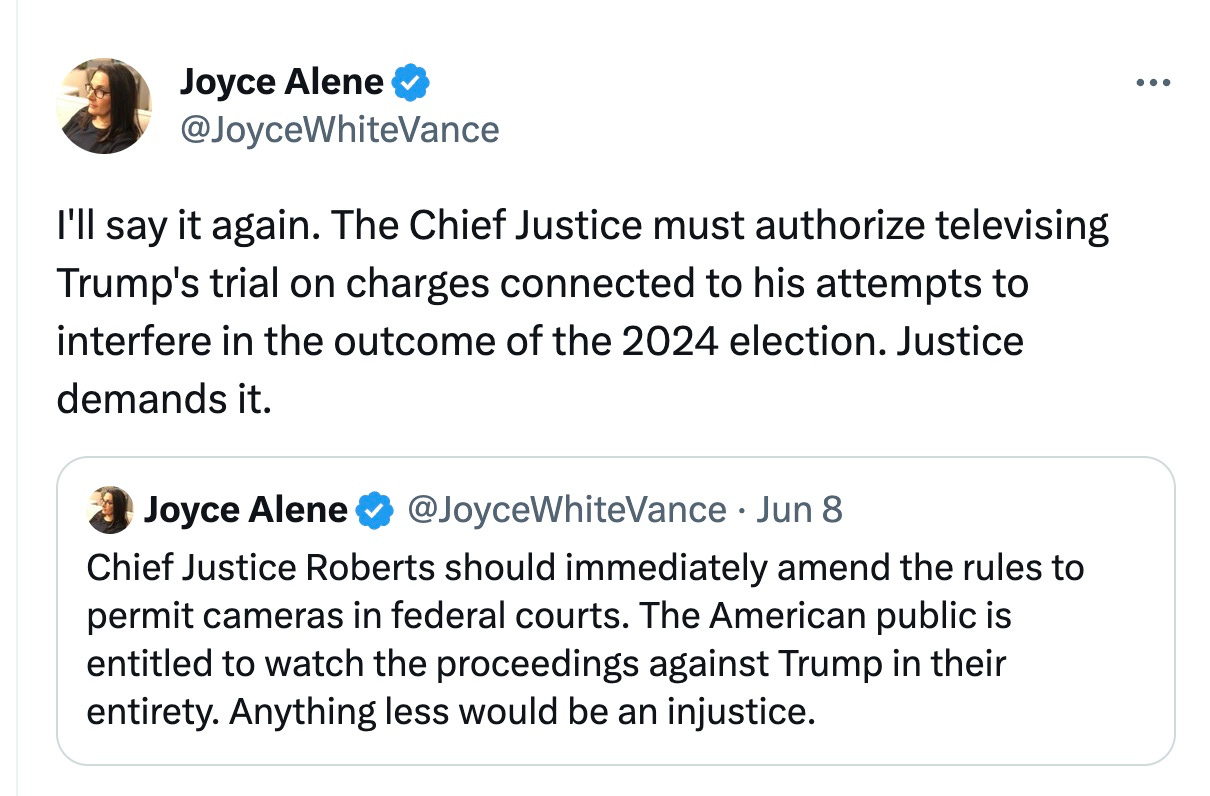Sixties Fan
Diamond Member
- Mar 6, 2017
- 57,296
- 10,914
- 2,140
- Thread starter
- #401
Part 5
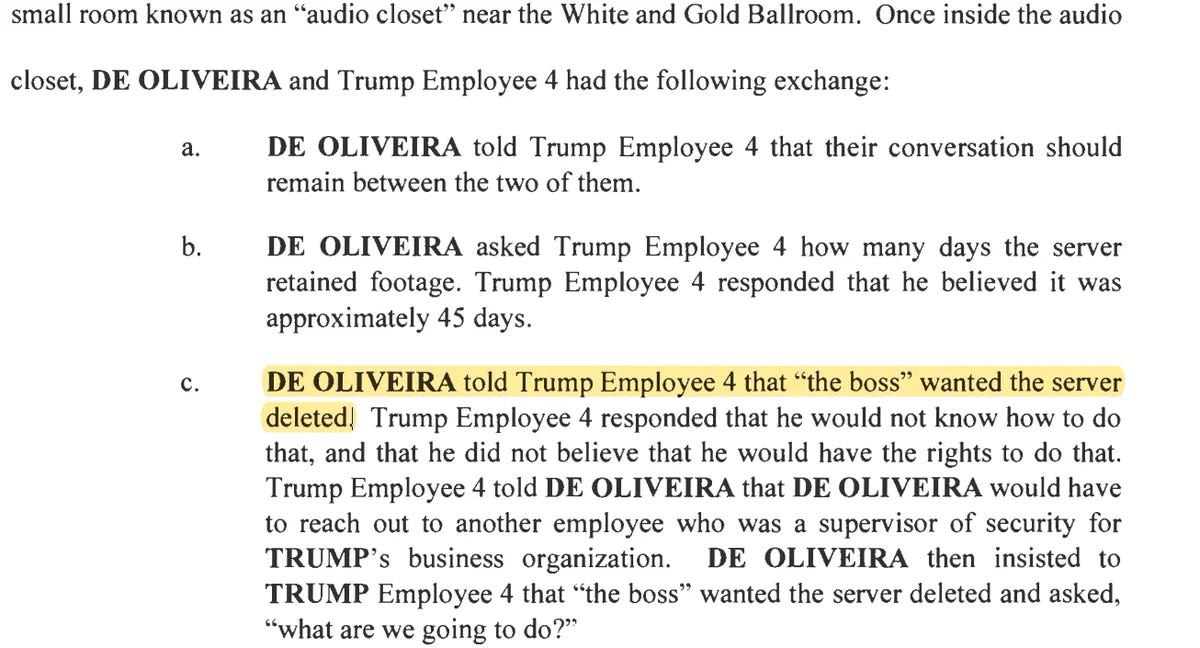
So, if you’re looking for a hero this week, Trump Employee 4 is a solid candidate. The allegation that Trump tried to destroy video evidence pushes this case over the top. It demonstrates he was conscious of his guilt. When Employee 4 testifies at trial that "DE OLIVEIRA told Trump Employee 4 that 'the boss' wanted the server deleted,” it’s chef’s kiss.
False Statements: The last of the new counts is count 42, which charges only De Oliveira with making false statements to FBI in a voluntary interview after being advised it was a crime to lie to them. This charge is open and shut—De Oliveira made certain statements, and they aren’t true. The only other thing the government needs to prove is that they were material to the investigation. Since these statements involve the handling of Trump’s boxes when they first came to Mar-a-Lago after he left the White House, and how they were stored, they undoubtedly had bearing on important information the FBI was acquiring to conduct its investigation.
Faced with this charge—an easy one for the government to prove, along with the others, especially the obstruction charges which carry lengthy penalties—it’s tough to figure why there wasn’t a plea agreement instead of an indictment. Perhaps that reality will dawn on De Oliveira as the case progresses, and he’ll end up testifying against Trump. Or perhaps he, like so many others, will stick by their Don. Maybe there’s a promise of a future pardon or some other benefit. One of the mysteries of Trump’s slick success with avoiding legal accountability remains his ability to prevent people from cooperating and testifying against him to save themselves.
The Protective Order: Jack Smith also filed a renewed motion for a protective order today—Judge Cannon still hasn’t put in place the basic order that permits classified discovery to proceed. Instead, after Trump’s lawyers unreasonably refused to agree with terms designed to protect classified materials they would receive in discovery, Judge Cannon ordered the government to go back and continue to try to work with them. They did, and today’s motion identifies two outstanding areas of contention. One is Walt Nauta’s insistence that he should have access to classified information—the Special Counsel says that’s unnecessary because he isn’t charged in any of the retention counts, but his counsel, who now possesses a security clearance, will be able to see it and can move to let Nauta view anything that does become relevant to his defense. This one should be resolved, easily, in the government’s favor.
Then there’s Donald Trump. He doesn’t want to have to go to a SCIF (Sensitive Compartmented Information Facility) to view classified material with his attorneys. He wants to be able to see it in the comfort of his own home. Trump still doesn’t get he’s not going to receive special treatment, unless Judge Aileen Cannon gives it to him. If she does on this point, look for Jack Smith to appeal immediately and win. Trump’s request flies in the face of clearly established law on handling classified documents—not exactly a shocker given the nature of this prosecution.

So, what’s going on here? Trump is making this argument, not because he thinks it’s a good one—it’s clearly a loser. He’s making it to set up an argument down the road that the trial has to be delayed even further. The argument will go something like this: President Trump is the Republican nominee for the presidency and he has a busy, full schedule. He can’t be running over to the courthouse in Fort Pierce or Miami to look at evidence with his trial every afternoon. We haven’t had enough time to prepare his defense. And it’s the government’s fault; they wouldn’t accommodate us. We need more time to be properly prepared for trial.
Judge Aileen Cannon, if past is prologue, may fall for it. But the argument is tone deaf, a real failure to read the room, or at least the Special Counsel’s office. Jack Smith was quick to point out that “Defendant Trump’s personal residences and offices are not lawful locations for the discussion of classified information, any more than they would be for any private citizen.” That’s true. And here’s the kicker, “There is no basis for the defendant’s request that he be given the extraordinary authority to discuss classified information at his residence, and it is particularly striking that he seeks permission to do so in the very location at which he is charged with willfully retaining the documents charged in this case.” Judge Cannon has set a leisurely schedule for discovery; now would be the moment for her to tell defendant Trump that she means it, if in fact she does, and that he, like anyone else facing similar charges, can spend time with his lawyers in a SCIF.
Donald Trump, self-described victim, has met Jack Smith, career prosecutor. And Smith isn’t buying it.
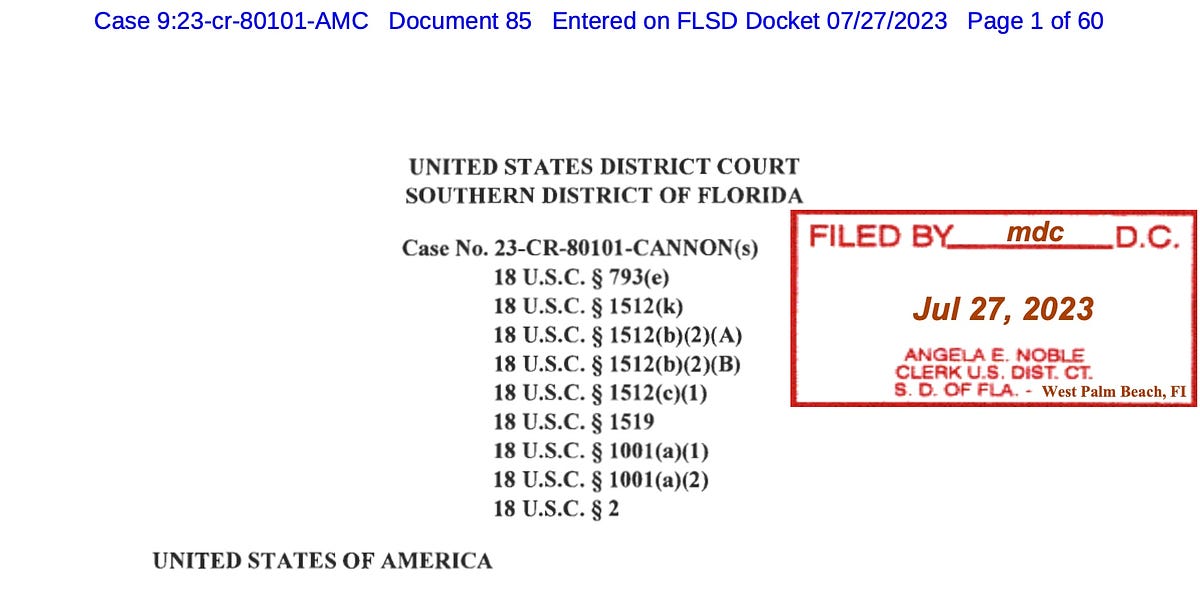

So, if you’re looking for a hero this week, Trump Employee 4 is a solid candidate. The allegation that Trump tried to destroy video evidence pushes this case over the top. It demonstrates he was conscious of his guilt. When Employee 4 testifies at trial that "DE OLIVEIRA told Trump Employee 4 that 'the boss' wanted the server deleted,” it’s chef’s kiss.
False Statements: The last of the new counts is count 42, which charges only De Oliveira with making false statements to FBI in a voluntary interview after being advised it was a crime to lie to them. This charge is open and shut—De Oliveira made certain statements, and they aren’t true. The only other thing the government needs to prove is that they were material to the investigation. Since these statements involve the handling of Trump’s boxes when they first came to Mar-a-Lago after he left the White House, and how they were stored, they undoubtedly had bearing on important information the FBI was acquiring to conduct its investigation.
Faced with this charge—an easy one for the government to prove, along with the others, especially the obstruction charges which carry lengthy penalties—it’s tough to figure why there wasn’t a plea agreement instead of an indictment. Perhaps that reality will dawn on De Oliveira as the case progresses, and he’ll end up testifying against Trump. Or perhaps he, like so many others, will stick by their Don. Maybe there’s a promise of a future pardon or some other benefit. One of the mysteries of Trump’s slick success with avoiding legal accountability remains his ability to prevent people from cooperating and testifying against him to save themselves.
The Protective Order: Jack Smith also filed a renewed motion for a protective order today—Judge Cannon still hasn’t put in place the basic order that permits classified discovery to proceed. Instead, after Trump’s lawyers unreasonably refused to agree with terms designed to protect classified materials they would receive in discovery, Judge Cannon ordered the government to go back and continue to try to work with them. They did, and today’s motion identifies two outstanding areas of contention. One is Walt Nauta’s insistence that he should have access to classified information—the Special Counsel says that’s unnecessary because he isn’t charged in any of the retention counts, but his counsel, who now possesses a security clearance, will be able to see it and can move to let Nauta view anything that does become relevant to his defense. This one should be resolved, easily, in the government’s favor.
Then there’s Donald Trump. He doesn’t want to have to go to a SCIF (Sensitive Compartmented Information Facility) to view classified material with his attorneys. He wants to be able to see it in the comfort of his own home. Trump still doesn’t get he’s not going to receive special treatment, unless Judge Aileen Cannon gives it to him. If she does on this point, look for Jack Smith to appeal immediately and win. Trump’s request flies in the face of clearly established law on handling classified documents—not exactly a shocker given the nature of this prosecution.

So, what’s going on here? Trump is making this argument, not because he thinks it’s a good one—it’s clearly a loser. He’s making it to set up an argument down the road that the trial has to be delayed even further. The argument will go something like this: President Trump is the Republican nominee for the presidency and he has a busy, full schedule. He can’t be running over to the courthouse in Fort Pierce or Miami to look at evidence with his trial every afternoon. We haven’t had enough time to prepare his defense. And it’s the government’s fault; they wouldn’t accommodate us. We need more time to be properly prepared for trial.
Judge Aileen Cannon, if past is prologue, may fall for it. But the argument is tone deaf, a real failure to read the room, or at least the Special Counsel’s office. Jack Smith was quick to point out that “Defendant Trump’s personal residences and offices are not lawful locations for the discussion of classified information, any more than they would be for any private citizen.” That’s true. And here’s the kicker, “There is no basis for the defendant’s request that he be given the extraordinary authority to discuss classified information at his residence, and it is particularly striking that he seeks permission to do so in the very location at which he is charged with willfully retaining the documents charged in this case.” Judge Cannon has set a leisurely schedule for discovery; now would be the moment for her to tell defendant Trump that she means it, if in fact she does, and that he, like anyone else facing similar charges, can spend time with his lawyers in a SCIF.
Donald Trump, self-described victim, has met Jack Smith, career prosecutor. And Smith isn’t buying it.

